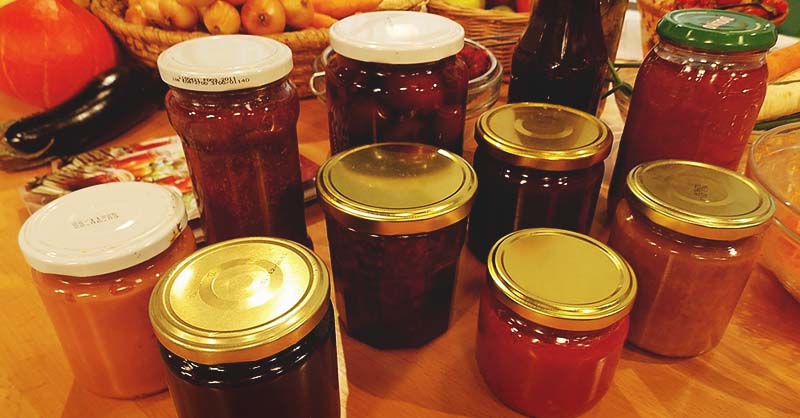In today’s world of convenience foods and perishable groceries, the concept of preserving food for extended periods might seem like a relic of the past. However, there is a growing interest in rediscovering traditional food preservation methods, and one such technique is oven canning.
While traditional canning methods using pressure cookers and water baths are well-established, oven canning offers a unique approach to extend the shelf life of your favorite foods for up to 25 years. In this article, we will explore the fascinating world of oven canning, its benefits, the process involved, safety considerations, and even provide an example recipe for canning tomatoes.
Understanding Oven Canning
Oven canning is a method of preserving food that relies on dry heat to create an airtight seal within glass jars. Unlike traditional water bath canning and pressure canning, oven canning doesn’t require the use of water or a pressure canner. Instead, it uses the natural heat of the oven to kill bacteria, yeast, and molds, effectively sealing the contents within the jars and preventing spoilage.
Advantages of Oven Canning
- Long Shelf Life: The most significant advantage of oven canning is its ability to extend the shelf life of food dramatically. When done correctly, properly sealed jars can keep food safe to eat for up to 25 years or more.
- Simplicity: Oven canning is relatively simple and doesn’t require specialized equipment like pressure canners or large pots of boiling water. This makes it accessible to beginners and those with limited kitchen space.
- Energy Efficiency: Compared to other canning methods, oven canning can be more energy-efficient, as it doesn’t involve maintaining a constant boil or pressure.
- Preservation of Texture and Flavor: Oven canning often preserves the texture and flavor of foods better than other methods, resulting in high-quality preserved goods.
The Oven Canning Process
While oven canning offers several benefits, it is crucial to follow specific steps to ensure safety and successful preservation. Here is a general overview of the process:
- Prepare the Jars: Start by cleaning and sterilizing the glass jars, lids, and rings. Ensure they are completely dry before use.
- Prepare the Food: Choose the food you want to preserve and prepare it according to a trusted recipe. It’s essential to follow recommended processing times and techniques.
- Fill the Jars: Pack the prepared food into the sterilized jars, leaving the appropriate headspace as specified in your recipe.
- Seal the Jars: Place the sterilized lids on the jars and screw on the rings until they are fingertip tight. Do not overtighten.
- Baking Process: Preheat your oven to the recommended temperature (usually around 250°F to 275°F). Place the filled jars on a baking sheet and carefully transfer them to the oven.
- Baking Time: Bake the jars for the recommended amount of time, typically 1 to 2 hours, depending on the type of food and jar size.
- Cooling: Once the baking is complete, remove the jars from the oven and allow them to cool naturally. As they cool, you’ll hear the distinctive “ping” sound, indicating that the jars have sealed successfully.
- Storage: Store the sealed jars in a cool, dark, and dry place. Label them with the date of preservation and the contents for easy identification.
Safety Considerations
While oven canning can be a reliable preservation method, it is essential to prioritize safety:
- Use Trusted Recipes: Only use recipes from reputable sources or organizations like the USDA or your local extension service to ensure proper processing times and techniques.
- Proper Sealing: Ensure the jars seal correctly after baking. Press down on the center of the lid to check for a vacuum seal. If the lid flexes, the seal is not secure.
- Storage Conditions: Store the canned goods in a stable environment with consistent temperature and humidity levels. Avoid extreme temperatures and direct sunlight.
- Regular Inspection: Periodically inspect your canned goods for signs of spoilage, such as bulging lids, unusual odors, or discoloration.
Example Recipe: Oven-Canned Tomatoes
Ingredients:
- 10 pounds of fresh, ripe tomatoes
- 2 tablespoons of lemon juice (for acidity)
- Salt (optional)
Instructions:
- Prepare the Jars: Wash and sterilize enough quart-sized glass canning jars, lids, and rings. Ensure they are completely dry.
- Prepare the Tomatoes: Wash and blanch the tomatoes in boiling water for 30 seconds to loosen the skins. Then, peel, core, and chop them into chunks.
- Fill the Jars: Pack the prepared tomatoes into the sterilized jars, leaving 1-inch of headspace. Add 2 tablespoons of lemon juice to each quart jar to ensure acidity.
- Seal the Jars: Place sterilized lids on the jars and screw on the rings until fingertip tight.
- Baking Process: Preheat your oven to 275°F. Place the filled jars on a baking sheet and carefully transfer them to the oven.
- Baking Time: Bake the jars for approximately 2 hours, ensuring that the temperature inside the jars reaches at least 180°F. Adjust the time as needed based on your oven’s performance.
- Cooling and Storage: Remove the jars from the oven and allow them to cool naturally. As they cool, you’ll hear the “ping” sound, indicating successful sealing. Store in a cool, dark, and dry place.
By following this example recipe, you can enjoy the benefits of oven-canned tomatoes, which will retain their flavor and quality for years to come.
Oven canning offers a unique and accessible way to preserve food for extended periods, potentially up to 25 years. While it may not replace traditional canning methods entirely, it provides a valuable addition to the toolkit of home food preservation enthusiasts.
By following the proper procedures, using trusted recipes, and prioritizing safety, you can enjoy the benefits of long-lasting, homemade preserved foods that are both delicious and nutritious. So, why not give oven canning a try and embark on a journey to extend the shelf life of your favorite dishes?

